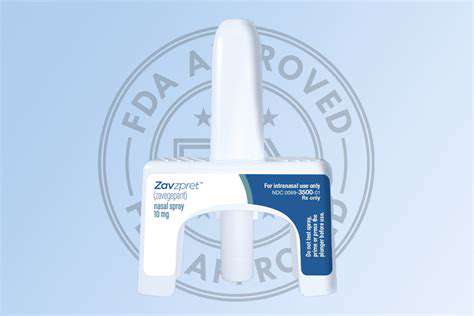Oral Migraine Medications: A Quick Overview
Oral migraine medications are a common and often effective treatment approach for migraines. They come in various forms, each designed to target different aspects of the migraine attack or prevent future occurrences. Understanding the different types of oral medications available is crucial for navigating your treatment options and working with your healthcare provider to find the best solution for your individual needs. This understanding can empower you to make informed decisions about your health and well-being, leading to a more effective management strategy for migraines.
The primary goal of oral migraine medications is to alleviate the pain and other symptoms associated with a migraine attack. These medications can be taken at the onset of a migraine or, in some cases, as preventative measures to reduce the frequency and severity of future attacks. Various factors, including the specific type of migraine, individual response to medication, and potential side effects, influence the selection of the most appropriate oral medication.
Different Types of Oral Migraine Medications
Oral migraine medications are categorized into various classes, each with its own mechanism of action. Triptans, for example, are a popular class known for their ability to constrict blood vessels in the brain, thus reducing inflammation and pain. They often provide rapid relief during an active migraine attack, but their use must be carefully managed due to potential side effects. Other classes, such as CGRP inhibitors, work by targeting specific substances in the brain that contribute to migraine pain, offering both acute and preventive benefits.
Opioid pain relievers are sometimes used, but their role in migraine management is often limited due to potential side effects and addiction concerns. Nonsteroidal anti-inflammatory drugs (NSAIDs) such as ibuprofen or naproxen are frequently used for their pain-relieving properties. However, they may not be as effective for all migraine sufferers. Understanding the different classes and their potential effects is essential for determining the most suitable option for individual needs. This knowledge allows for a personalized treatment plan that maximizes effectiveness and minimizes potential risks.
Additionally, certain medications, such as beta-blockers or antidepressants, may be prescribed as preventive measures to reduce the frequency and intensity of migraines. This approach is often implemented when acute treatment options prove insufficient. The selection of a specific medication class often depends on the individual's unique response and potential side effects.
Factors to Consider When Choosing Oral Migraine Medications
Several factors should be considered when choosing an oral migraine medication. The individual's medical history, including any pre-existing conditions or allergies, plays a crucial role in determining suitability. The severity and frequency of migraines, along with the individual's response to previous treatments, are also important considerations. Understanding the potential side effects associated with different medications is essential, as some may cause adverse reactions. Open communication with a healthcare professional is critical to finding the most effective and safe treatment plan. Careful evaluation and consideration of these factors are essential to avoid potential complications and ensure a positive treatment outcome.
Taking into account personal preferences, such as the ease of administration and potential impact on daily activities, can also contribute to a positive treatment experience. The cost of the medication is another factor to consider, as it can vary depending on the specific medication and insurance coverage. Ultimately, a thorough discussion with a healthcare provider, considering all these factors, is vital for determining the most suitable oral migraine medication.
The specific characteristics of the migraine, such as the presence of aura or associated symptoms, can also influence medication selection. The patient's overall health and lifestyle factors should be carefully evaluated to ensure the chosen medication is compatible with other medications or health conditions. This holistic approach to medication selection can lead to a more personalized and effective treatment strategy.
Careful consideration of these factors can empower individuals to take an active role in their migraine management. This proactive approach, combined with professional guidance, can lead to more effective and satisfying treatment outcomes. The goal is to find a medication that effectively manages symptoms and minimizes potential side effects.
Nasal Spray Migraine Medications: Targeted Relief

Understanding Nasal Spray Migraine Medications
Nasal spray migraine medications offer a unique delivery method for treating migraine attacks. These sprays, often containing triptans or other active ingredients, are designed to be absorbed quickly into the bloodstream through the nasal passages. This direct delivery can lead to faster onset of action compared to oral medications, potentially allowing for quicker relief from migraine pain.
One of the key advantages of nasal sprays is their potential to bypass the digestive system, minimizing the impact on stomach upset or nausea often associated with oral medications. This is particularly beneficial for individuals sensitive to the side effects of oral drugs.
Types of Nasal Spray Migraine Medications
Several different types of nasal spray migraine medications are available, each with varying active ingredients and mechanisms of action. Some commonly prescribed nasal sprays contain triptans, such as sumatriptan, which work by constricting blood vessels in the brain, thereby reducing inflammation and pain.
Other medications, like those containing dihydroergotamine, work through different pathways to achieve similar results. Understanding the specific mechanisms of action of different medications can help individuals choose the most appropriate treatment for their needs.
Potential Benefits of Nasal Spray Delivery
Nasal spray delivery systems offer a number of potential advantages for migraine sufferers. The rapid absorption of medication through the nasal passages can lead to faster relief compared to oral medications. This is especially crucial during a migraine attack, where prompt relief is often paramount.
Furthermore, the avoidance of the digestive system can minimize potential side effects such as nausea and stomach upset, making the nasal spray option more suitable for some individuals.
Potential Side Effects and Considerations
While nasal spray migraine medications can be effective, it's important to be aware of potential side effects. Some individuals may experience nasal irritation, congestion, or dryness after using the spray. Furthermore, some nasal sprays may not be suitable for people with certain medical conditions or who are taking other medications.
Consult with a healthcare professional to discuss potential risks and benefits, and to determine if nasal spray is an appropriate treatment option for your specific needs. It's crucial to follow your doctor's instructions carefully for safe and effective use.
Dosage and Administration Instructions
Proper dosage and administration of nasal spray migraine medications are essential for achieving optimal results and minimizing potential side effects. Always carefully read the medication label and follow the prescribed instructions provided by your doctor or pharmacist.
Pay close attention to the recommended dosage, frequency of use, and the duration of treatment. Failing to adhere to these guidelines can compromise the effectiveness of the medication and potentially lead to adverse reactions.
Injectable Migraine Medications: Rapid Relief for Severe Cases

Understanding Injectable Migraine Medications
Injectable migraine medications are a crucial part of treatment strategies for severe or debilitating migraine attacks. These medications, often administered in a clinical setting or by trained healthcare professionals, provide a rapid and potent method of relieving migraine pain and associated symptoms. They are typically reserved for situations where oral medications are ineffective or impractical. Understanding the various types and their mechanisms of action is essential for patients and healthcare providers alike.
These injectable therapies are designed to address the underlying physiological processes contributing to a migraine attack. They often work by targeting specific neurotransmitters or inflammatory pathways, effectively dampening the pain signals and reducing the intensity of the headache.
Types of Injectable Migraine Medications
Several different injectable medications are available for migraine treatment. Some common examples include sumatriptan, rizatriptan, and dihydroergotamine. Each medication has unique properties and potential side effects that healthcare providers consider when prescribing them. Understanding the differences between these medications is crucial for patient care.
For instance, sumatriptan is a triptan, a class of medications known for their vasoconstrictive effects. This action helps to reduce the dilation of blood vessels in the brain, a key factor in migraine pain.
Administration and Dosage
The administration of injectable migraine medications typically involves a trained healthcare professional, either in a clinic or hospital setting. The specific dosage and administration route are determined by the patient's individual needs and the severity of their migraine attack. Precise administration is critical to achieving effective pain relief while minimizing potential side effects.
Proper injection technique and patient education are essential to ensure the safety and efficacy of these medications. Factors such as the patient's medical history, current medications, and potential allergies are carefully considered by the healthcare provider before administering the injection.
Potential Side Effects and Precautions
While generally effective, injectable migraine medications can have potential side effects. These side effects can range from mild discomfort at the injection site to more serious, though less common, adverse reactions. Careful monitoring is crucial to identify and manage any potential complications. Patients should be aware of possible side effects and report any unusual symptoms to their healthcare provider.
It's important to note that some individuals may experience allergic reactions or other adverse effects to these medications. Patients with pre-existing medical conditions should discuss the potential risks and benefits of injectable migraine medications with their healthcare provider before starting treatment.
Effectiveness and Considerations for Use
The effectiveness of injectable migraine medications varies from person to person. Factors such as the specific medication, the individual's response to treatment, and the characteristics of the migraine attack all influence the outcome. Ultimately, the decision to use injectable migraine medication is a shared one between the patient and their healthcare provider.
Patients should be open and honest with their healthcare provider about the effectiveness of different treatment options and any challenges they experience with managing their migraine attacks. This open communication is essential for developing an individualized treatment plan that best meets their needs.
Wear in mechanical systems can be attributed to various mechanisms, including abrasive, adhesive, and fatigue wear. Each mechanism manifests differently, influencing component longevity and overall system performance. Understanding these mechanisms is crucial for developing effective lubrication strategies that address specific wear types, thereby ensuring optimal functionality and reduced maintenance costs.